Maybe Christmas, the Grinch thought, doesn't come from a store. - Dr. Seuss
The French are nothing if not traditional and their holiday celebrations never waver from one year to the next; the Bûche de Noël or Yule log is a delicious, sophisticated, and impressive dessert for any occasion but an absolute must for the holiday season. Bakery cases across France are laden with bûches of all sorts, heavy with buttercream or rich with ice cream, glazed and iced and swagged with sugar, festive with meringue; tiny little individual bûches, large bûches for a dozen convives, traditional buttercream-filled genoise rolls in coffee, hazelnut, or chocolate, or more modern, glistening visions of mango and passionfruit, or raspberry and yuzu bavaroise.
Like so many French holiday pastries - think of the galette des rois - the bûche begins with an ancient story steeped in pre-Christian pagan ritual.
The bûche de Noël has a history older than the Christmas tree in France, possibly coming from pagan Solstice celebration rituals. Before the spread of Christianity, polytheistic cults burned a tree trunk for several days as an offering to the gods to guarantee a good harvest for the coming year. The tradition continued, adopted by the Christians, a tradition recorded since the Middle Ages and well into the 19th century at the very least. While the family was away at Christmas Mass, a giant log would be dragged into the house and placed in the chimney where it would be burning upon the family’s return, welcoming and warming them. The family would gather round the burning log for their holiday meal, sing songs, and celebrate. The log was to come from an old fruit tree and must be so large that it would burn uninterrupted for at least three days or longer, from the evening of December 24 through January 1st. The Yule log, formerly a symbol of the sun, now a Christian symbol glorifying the retribution of light over darkness, life over death, good over evil, was often blessed, the ashes later to be spread around the house, stables and barn, bringing health, luck, and prosperity to the family and friends gathered round.
When the bûche de Noël, the pastry, was first created is difficult to pinpoint and its origins are often debated. Whether the 18th or 19th century, whether in Paris, Lyon, Provence or Monaco, there are conflicting stories, but we can all agree that the cake was created to replace the true Yule log as the one custom disappeared, replaced by another albeit symbolic. Pierre Lacam and Antoine Charabot write in their 1892 book Le Glacier Classique et Historique: “We were never able to find out who had created the Yule log, it was attributed to all the (pastry) houses and, by dint of searching, I found that it was a man named Antoine Charabot, chef at M. Sanson, 14, rue de Buci, who created the tree branch in 1879. It remained static for a few years. A number of houses began to make them, and since 1886 their popularity has not waned. The successful buttercream log was created in 1879 by Antoine Charabot at Maison Quillet.”
By 1938, as Prosper Montagné writes in the original Larousse Gastronomique, it had indeed become a popular Christmas tradition. The bûche de Noël, he confirms, is the “symbolic cake prepared by all the pastry chefs in France for Christmas.” The bûche, he explains, is most often made with genoise and filled with a variety of creams, most particularly a buttercream. When I make my own, I make it as simple as possible and usually follow my own family’s desires and tastes when choosing each flavor element. And while simple, it is still a festive, elegant, and impressive dessert, worthy of a celebration.
I’ve made several variations on the bûche, but this one is most definitely still my favorite. A little time consuming, but each element is quite simple and, if you follow the directions carefully for each step, you’ll find that it is pretty easy and incredibly spectacular.
Chocolate Chestnut Rum Bûche de Noël
For this Bûche, prepare the Chestnut Mascarpone Whipped Cream and the Rum Syrup the day before making the genoise/sponge and assembling the cake. I topped the cake with chopped candied chestnuts and drizzles of chocolate ganache thinned with 2 capfuls of amber rum. Recipe for the ganache at the end of the recipe.
For the Chestnut Mascarpone Whipped Cream Filling:
Scant 1 teaspoon powdered unflavored gelatin + 2 tablespoons cold water
¾ cup (190 ml) heavy whipping cream
½ cup (125 grams) mascarpone cheese
3 – 4 tablespoons crème de marrons – sweetened vanilla chestnut cream
Place the gelatin in a small saucepan; add the 2 tablespoons cold water and let sit for 5 minutes to soften, swirling the pan gently to pull all the granules of gelatin into the liquid. Place the pan over a very, very low heat to warm the water and melt the gelatin – you want to heat the water for about 4 -5 minutes without allowing it to come to a boil or to boil away: allow the water to heat then, holding the pan just off of the flame/heat, swirling and whisking (I have a tiny drinks whisk I use) almost constantly, allowing the small amount of water to stay heated for long enough to allow the gelatin to melt. After 4 - 5 minutes, remove from the heat and allow to cool for 5 minutes or until barely tepid to the touch.
Beat the heavy cream in a chilled bowl until thick, soft peaks hold. Continue beating as you pour the gelatin water into the heavy cream in a very slow stream while you beat. Beat in the mascarpone about a tablespoon or two at a time. Add and beat in the chestnut cream; add a bit more if you want to accentuate and deepen the chestnut flavor.
Place in the refrigerator to chill for at least an hour to overnight to allow the gelatin to add body to the filling.
For the Rum Sugar Syrup:
Scant half cup (100 ml) water
Scant ⅜ cup (80 grams) sugar
2 - 3 tablespoons dark or amber rum (the rum can be replaced with Cointreau, Grand Marnier, Kahlua, etc)
Place the water with the sugar in a small saucepan and bring to the boil. Let boil for 2 minutes then remove from the heat. Stir in the rum to taste. Set aside to cool to room temperature.
For the Chocolate Genoise/Sponge:
4 large eggs, separated, preferably at room temperature
Pinch salt + 2 drops lemon juice for the whites
½ cup (100 grams) sugar
¼ teaspoon vanilla
½ cup + 1 ½ tablespoons (80 grams) flour
2 tablespoons + 1 teaspoon (20 grams) unsweetened cocoa powder
¼ teaspoon baking powder
Unsweetened cocoa powder and a sifter or sieve
Preheat the oven to 375°F (190°C). Very lightly butter a 15 ½ x 10 ½ x ¾ inch (40 x 27 x 2 cm) jellyroll pan and line with parchment paper. Have a clean dishtowel larger than the jellyroll pan as well as a large, clean flat baking sheet ready.
Separate the eggs, placing the yolks in large mixing bowl and the whites in a very clean medium-sized bowl (I prefer plastic). If you like, add a tiny pinch of salt and 2 drops lemon juice to the whites to help stabilize them.
Add the sugar to the yolks and beat with an electric mixer on high until thick, creamy and pale, about 3 minutes. Beat in the vanilla.
Stir or whisk the flour, the cocoa powder, and the baking powder together in a bowl.
Using very clean beaters, beat the whites until peaks hold and the meringue is dense. Fold the whites into the yolk/sugar mixture gently but firmly using a spatula, a third of the whites at a time, alternating with the flour, cocoa, baking powder mix (preferably sifted onto the batter to remove all lumps) in two or three additions. Do not over mix/fold but do make sure there are no more clumps of whites visible, no pockets of flour.
Spread the batter evenly in the parchment-lined jellyroll pan all the way into the corners. Bake in the preheated oven for just 15 minutes or until lightly puffed, just set, and the cake springs back when lightly pressed.
Remove from the oven. Immediately slide the parchment paper and cake together onto the second large flat baking sheet. Invert the warm jelly roll pan and place on top of the genoise and, holding both the jellyroll pan and the baking sheet firmly together, flip them over and remove the (now) top baking sheet; the top of the genoise is now face down while the parchment paper is up. Peel off the parchment paper. Sift a very light layer of cocoa powder all over the genoise and then place the clean dishtowel over the genoise. Once again place the clean baking sheet inverted on top of the dish towel-covered cake and, holding the baking sheet and the jelly roll pan firmly together, flip. Remove the jellyroll pan.
You should now have the warm genoise topside up, the cake on the clean dishtowel on the clean flat baking sheet. Sift the top of the genoise with a very light layer of cocoa powder and, starting on a short end of the cake, roll the genoise up – gently but as tightly as possible without crushing or breaking the cake - in the towel (the towel will be rolled up with the cake). Set aside to cool completely.
Assemble the Bûche:
When the genoise is completely cool, carefully unroll and slide the cake off of the dishtowel and onto a clean sheet of parchment paper. Using a pastry brush with soft bristles, brush/dab a good amount of Rum Sugar Syrup all over the cake’s surface, really allowing a good amount of it to soak into the cake; not only will this add flavor to the dessert but will moistened the sponge cake, helping to keep it from breaking when rolling.
Once the cake is imbibed with the rum syrup, spread most of the Chestnut Mascarpone Whipped Cream evenly over the genoise almost, but not quite, to the edges of the cake; save about 4 or 5 tablespoons to use for piping a decorative swirl on the top of the roll. The cake might be curled at one end; do not try to press it flat if you can help it, just follow the curve when spreading on the cream.
Starting at the short end of the genoise (the end rolled up first in the towel to cool), roll up the cake as tightly as possible without pressing or rolling so tightly that all of the cream oozes out. When completely rolled, scrape off any filling that has oozed out and add it back to the bowl with the extra filling. Using a sharp or serrated knife, cleanly trim off both ends of the roll or bûche (these can be eaten now). Very carefully, lift the bûche onto the serving platter, placing the seam side down, remove the parchment paper and gently reshape the log so it is even from one end to the other.
Cover with plastic wrap and place in the refrigerator to chill until just before serving time. The bûche can be made, assembled, and chilled several hours or the day before serving; as it chills, the filling will continue to firm and the cake itself to moisten.
Just before serving, dust the entire surface of the roll lightly and evenly with cocoa powder or powdered/icing sugar, drizzle with chocolate rum ganache* then pipe the rest of the cream on top and decorate as you like with fruit, colored sugar, crushed candy canes or chocolate curls. Or candy Christmas shapes. I used chopped candied chestnuts.
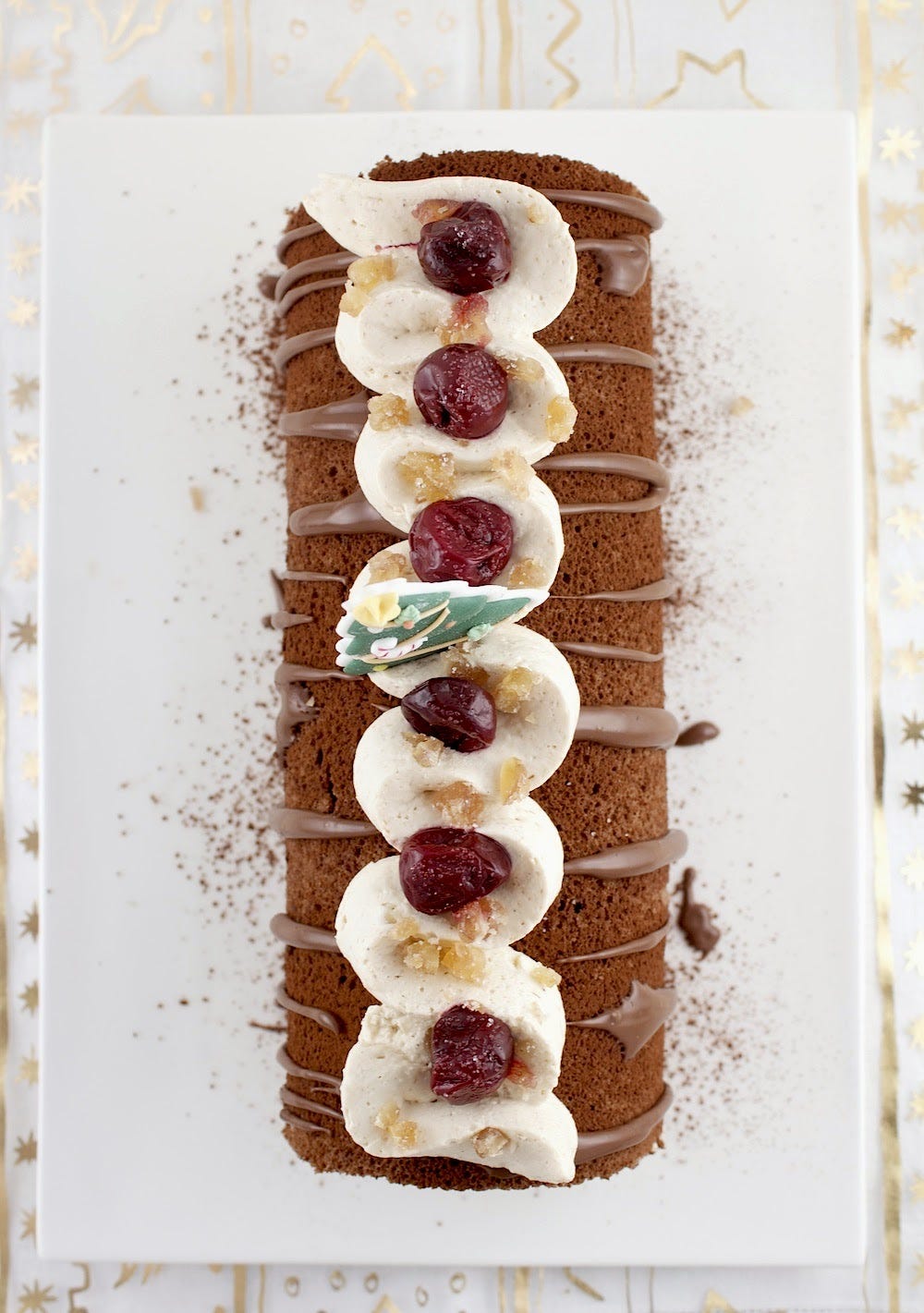
Prepare the Chocolate Ganache by chopping 3.53 ounces (100 grams) chocolate and placing it in a heatproof/Pyrex bowl. Bring ½ cup (125 ml) heavy cream just to a boil and immediately pour over the chopped chocolate. Allow to sit for about a minute then stir until all of the chocolate is melted and the ganache is smooth. Allow to cool to room temperature, stirring occasionally, until thickened. Stir in 2 tablespoons dark/amber rum. Reserve in the refrigerator. The ganache will firm up as it cools. Take out enough time before decorating and serving the bûche for the ganache to come to room temperature and drizzling consistency; it should drizzle easily yet be thick enough to stay on the cake and not run off and pool on the serving platter.
Thank you for subscribing to Life’s a Feast by Jamie Schler. Please leave a comment; your opinions and feedback help me create the content you want and your stories help build our community. You can support my work by sharing the link to my Substack with your friends, family, and your social media followers. If you would like to see my other book projects in the making, read my other essays, and participate in the discussions, or just support me further, please upgrade to a paid subscription.




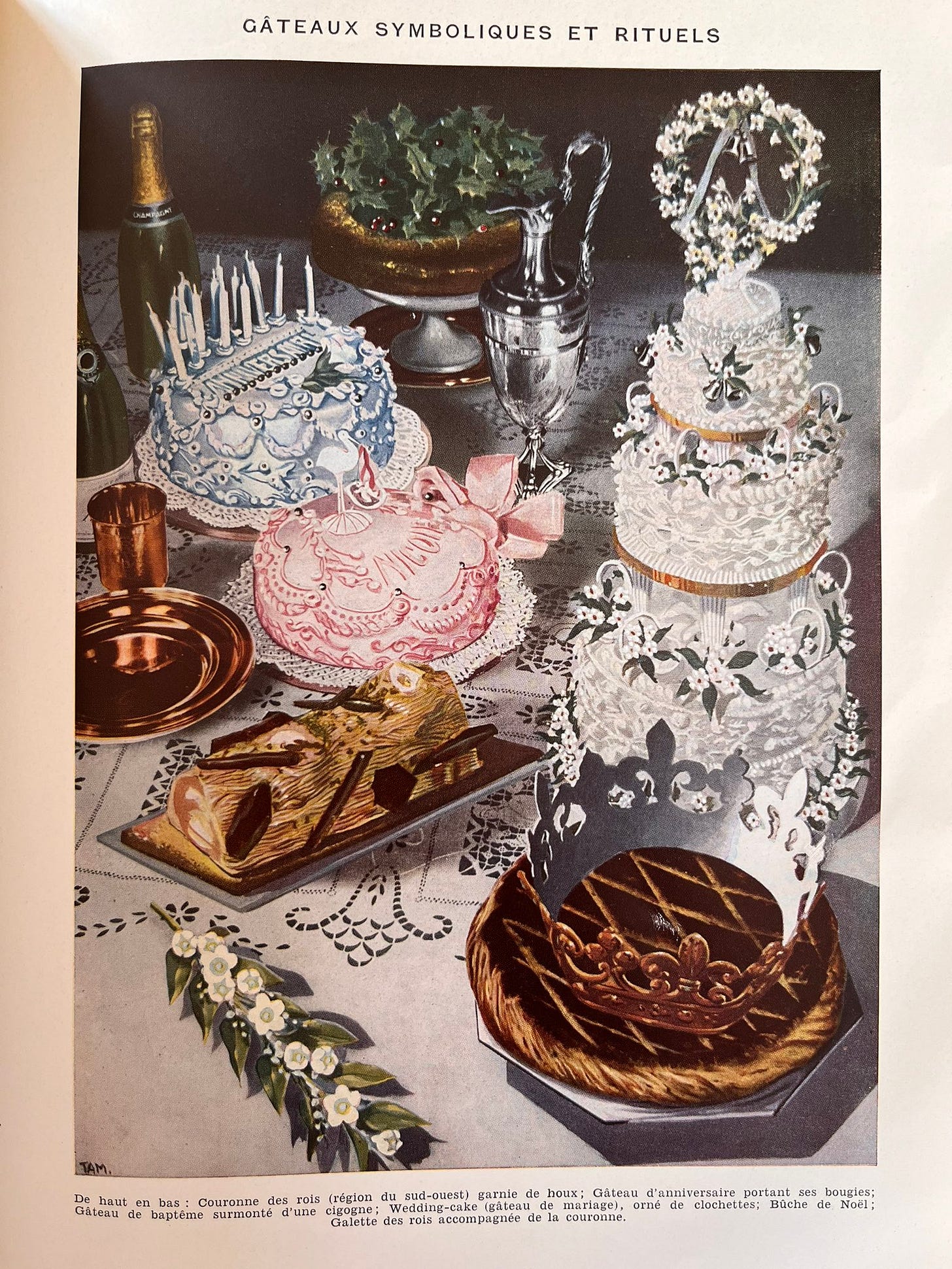
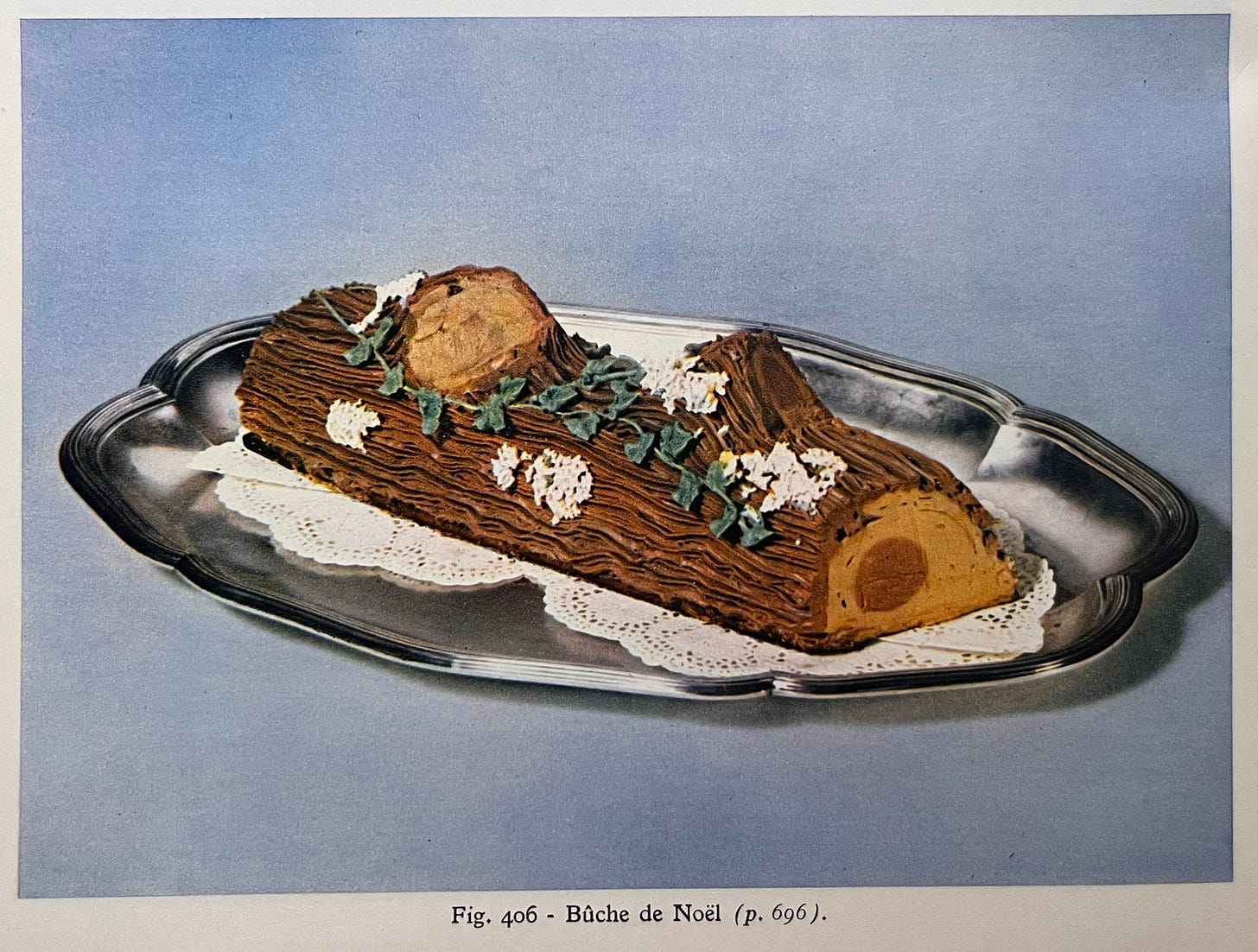
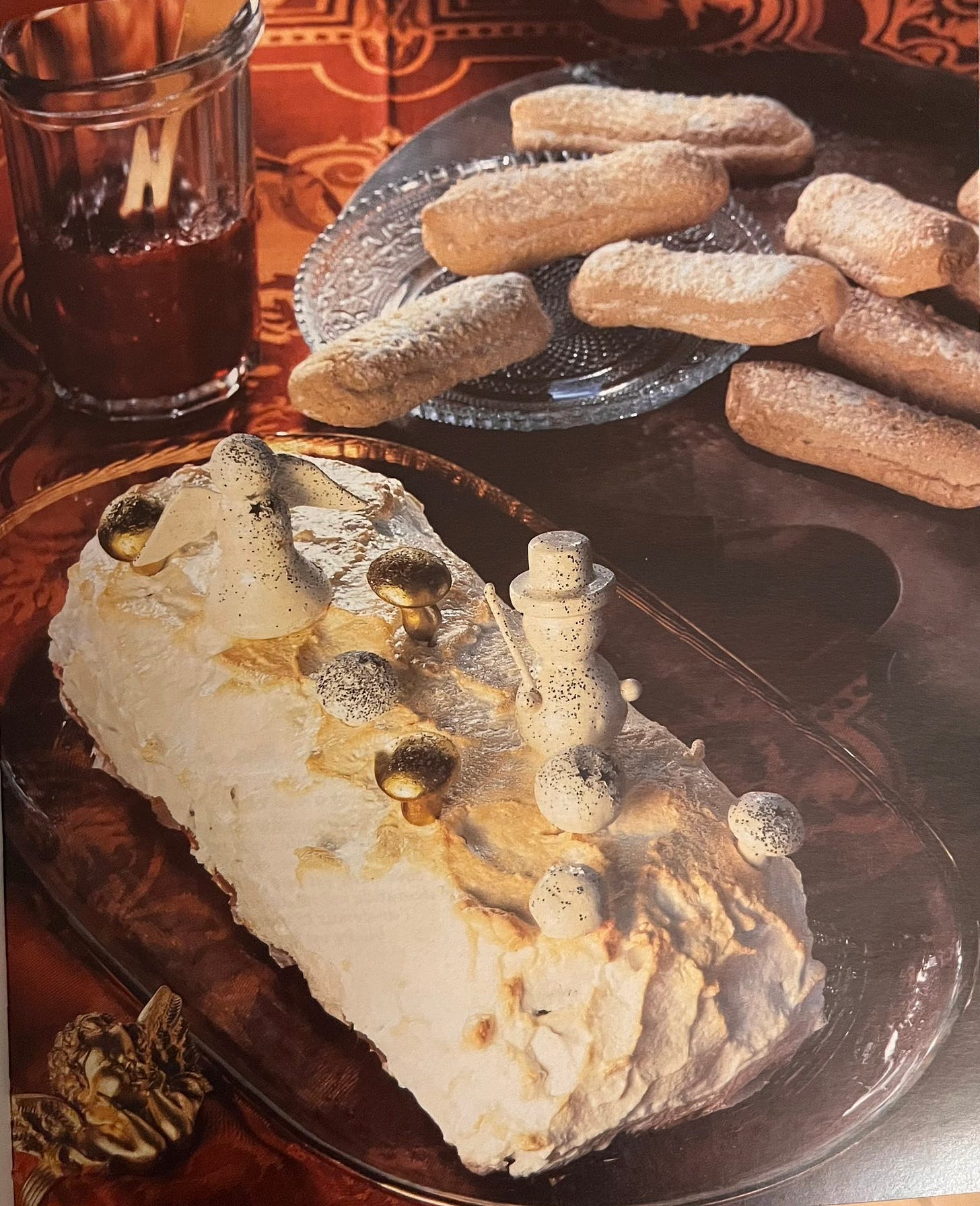
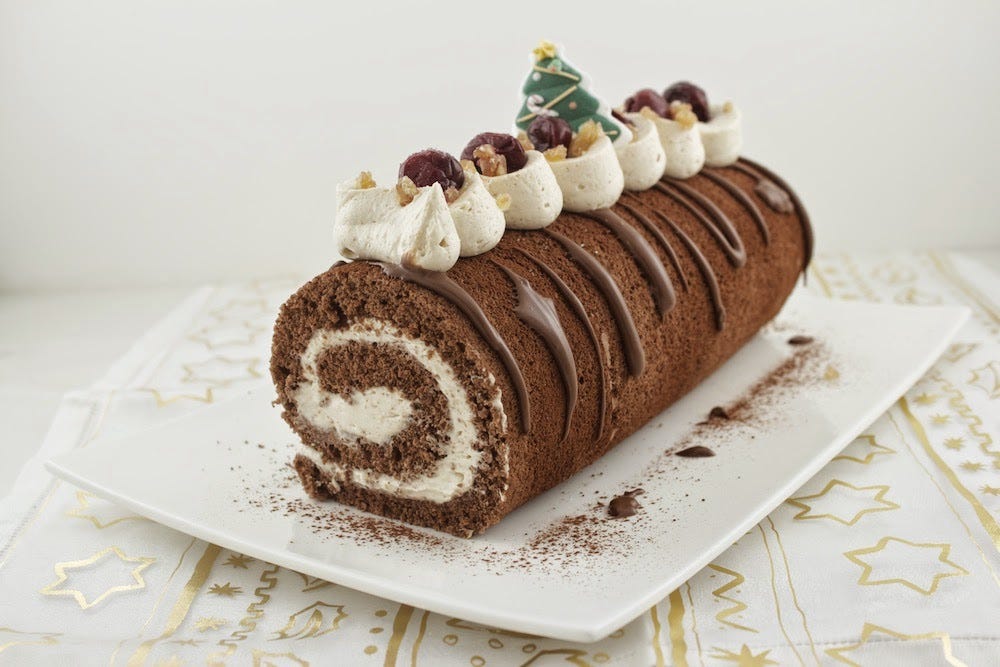

Been wanting to make one forever. Thank you for this step by step guide (mainly the cake handling, that's the "scary" part, lol)
Not this meal, but plan to practice for next year's meal.
This is a work of art. I’ve always wanted to make one… and I think I’ve finally found my recipe! Thank you, and Merry Holidays to you!